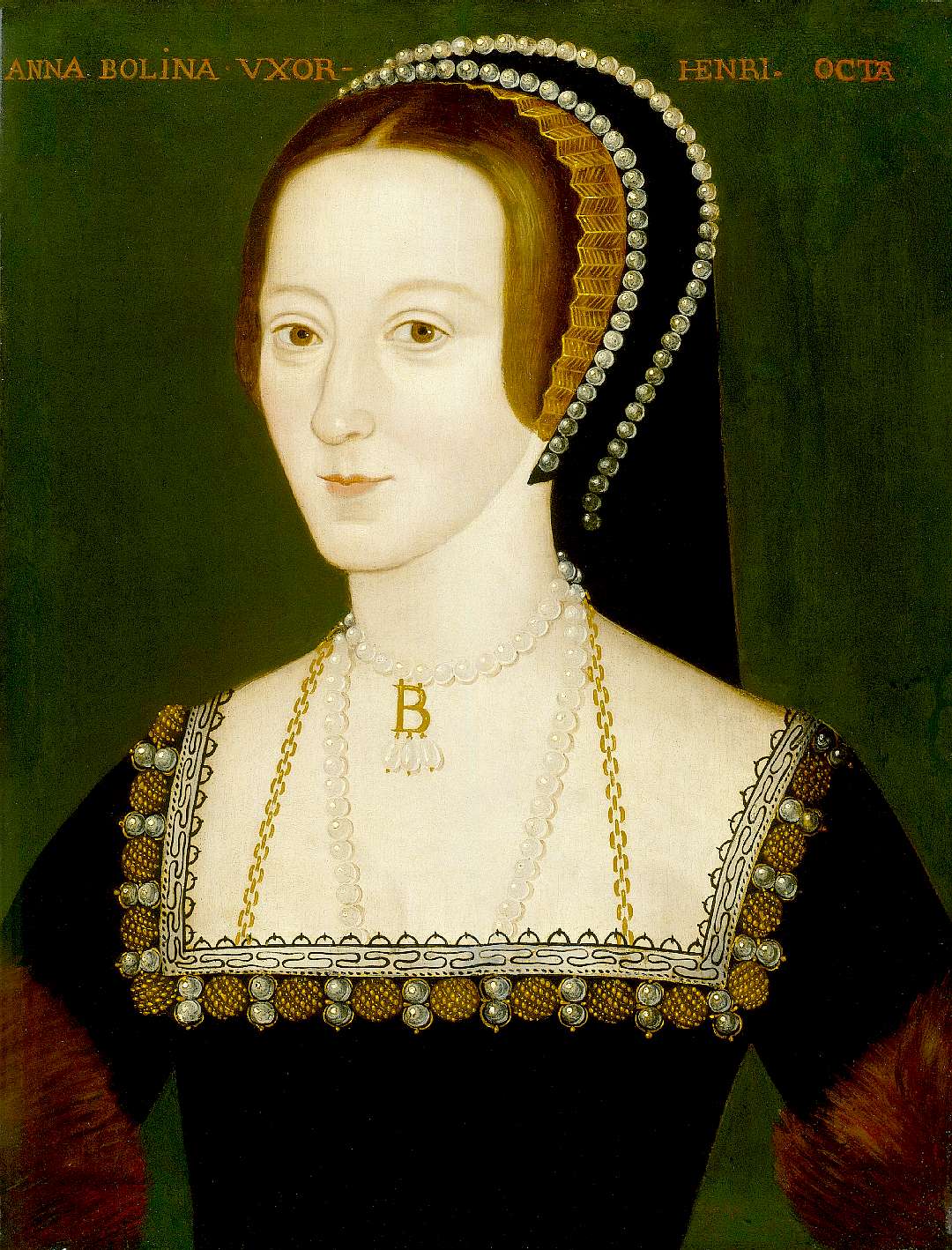
Anne Boleyn c. 1501 – 19 May 1536 was Queen of England from 1533 to 1536 as the second wife of King Henry VIII. Henry's marriage to her, and her subsequent execution by beheading, made her a key figure in the political and religious upheaval that was the start of the English Reformation.
Anne was the daughter of Thomas Boleyn, 1st Earl of Wiltshire, and his wife, Lady Elizabeth Howard, and was educated in the Netherlands and France, largely as a maid of honour to Queen Claude of
France.
Anne returned to England in early 1522, to marry her Irish cousin James Butler, 9th Earl of Ormond; the marriage plans were broken up by Cardinal Wolsey, and instead she secured a post at court as maid of honour to Henry VIII's wife,
Catherine of Aragon.
Early in 1523 Anne was secretly betrothed to Henry Percy, son of the 5th Earl of Northumberland, but the betrothal was broken by Cardinal Wolsey in January 1524 and Anne was sent back home to Hever Castle. In February or March 1526, Henry VIII began his pursuit of Anne. She resisted his attempts to seduce her, refusing to become his mistress, which her sister Mary had been. It soon became the one absorbing object of Henry's desires to annul his marriage to Catherine of Aragon so he would be free to marry Anne. When it became clear that Pope Clement VII would not annul the marriage, the breaking of the Catholic Church's power in England began. In 1532, Henry granted Anne the Marquessate of Pembroke.
Henry and Anne formally married on 25 January 1533, after a secret wedding on 14 November 1532. On 23 May 1533, newly appointed Archbishop of Canterbury Thomas Cranmer declared Henry and Catherine's marriage null and void; five days later, he declared Henry and Anne's marriage valid. Shortly afterwards, the Pope decreed sentences of excommunication against Henry and Cranmer. As a result of this
marriage and these excommunications, the first break between the Church of England and Rome took place and the Church of England was brought under the King's control. Anne was crowned Queen of England on 1 June 1533. On 7 September, she gave birth to the future
Queen Elizabeth I. Henry was disappointed to have a daughter rather than a son but hoped a son would follow and professed to love
Elizabeth. Anne subsequently had three miscarriages, and by March 1536, Henry was courting Jane Seymour. In order to marry
Jane Seymour, Henry had to find reasons for his marriage with Anne to end.
Henry VIII had Anne investigated for high treason in April 1536. On 2 May she was arrested and sent to the Tower of London, where she was tried before a jury of peers – which included Henry Percy, her former betrothed, and her own uncle, Thomas Howard – and found guilty on 15 May. She was beheaded four days later. Modern historians view the charges against her, which included adultery, incest and plotting to kill the king, as
unconvincing. Some say that Anne was accused of witchcraft but the indictments make no mention of this charge.
After the coronation of her daughter, Elizabeth, Anne was venerated as a martyr and heroine of the English Reformation, particularly through the works of John Foxe. Over the centuries, she has inspired, or been mentioned, in many artistic and cultural works and thereby retained her hold on the popular imagination. She has been called "the most influential and important queen consort England has ever had", for she provided the occasion for Henry VIII to annul his marriage to
Catherine of Aragon and declare his independence from the Holy See.
THE
SIX WIVES OF HENRY VIII
Catherine
of Aragon
Anne
Boleyn
Jane
Seymour
Anne
of Cleves
Catherine
Howard
Catherine
Parr
LINKS
& REFERENCE
http://www.english-heritage.org.uk/
